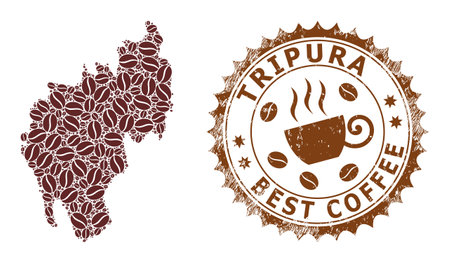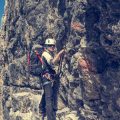1. Understanding the Basics: Compass Anatomy and Function
If you want to confidently explore the American backcountry using USGS maps, it’s essential to know your way around an orienteering compass. Whether you’re hiking the Rockies, navigating deep forests, or trekking through national parks, a basic understanding of compass anatomy will set you up for safe and successful adventures.
Main Parts of an Orienteering Compass
Let’s break down the main components of a standard orienteering compass and what each part does:
| Compass Part | Description | How It Helps with Navigation |
|---|---|---|
| Baseplate | A flat, clear plastic surface with ruler markings. | Helps you align the compass on your map and measure distances easily. |
| Direction-of-Travel Arrow | A large arrow printed on the baseplate. | Shows which way to move after setting your bearing. |
| Rotating Bezel (Azimuth Ring) | A circular dial marked in degrees (0°–360°). | Lets you set and read your direction or bearing in degrees. |
| Magnetic Needle | A red-and-white needle that floats in liquid. | The red end always points to magnetic north, which is key for orientation. |
| Orienting Arrow & Lines | Arrows and lines inside the bezel housing. | Used to line up with map grid lines or orienting the compass to a map’s north. |
| Ruler & Scale Markings | Measurement scales along the baseplate edges (usually inches, millimeters, and common USGS map scales). | Helps you estimate real-world distances when plotting routes on USGS maps. |
Why These Parts Matter in American Wilderness Navigation
The design of an orienteering compass is all about precision and ease of use—especially important when you’re far from cell service. USGS topographic maps are packed with detail, but without knowing how to use each part of your compass, it’s easy to get turned around in vast U.S. wilderness areas. By mastering these basics, you’ll be ready to translate what’s on your map into real-life navigation steps—whether following a trail in Yellowstone or bushwhacking through remote parts of the Appalachians.
2. Getting to Know USGS Topographic Maps
What Makes USGS Maps Special?
USGS (United States Geological Survey) topographic maps are the gold standard for backcountry navigation in the United States. They’re not just regular road maps—they give you a detailed, bird’s-eye view of the land, showing everything from mountain peaks and valleys to rivers, trails, and even old cabins. Understanding how to read these maps is a key skill for safe and successful adventures off the beaten path.
Common Features and Symbols
USGS maps use a variety of symbols and colors to represent different features. Here’s a handy table with some common symbols you’ll find:
| Symbol/Color | What It Means |
|---|---|
| Green Areas | Forests or wooded areas |
| Blue Lines & Shapes | Rivers, lakes, streams, or other water bodies |
| Brown Lines | Contour lines (showing elevation changes) |
| Black Lines & Symbols | Man-made features like roads, trails, buildings |
| Purple Tint/Symbols | Updated features since the last map edition |
Understanding Contour Lines
Contour lines are one of the most important elements on a USGS map. These brown lines connect points of equal elevation. Here’s what you need to know:
- The closer the lines are together, the steeper the terrain.
- If contour lines form closed loops with no streams or rivers inside, it usually means a hill or mountain top.
- If they form closed loops with hachure marks (short lines inside the loop), that indicates a depression or basin.
- Every fifth contour line is usually thicker and labeled with its elevation—this helps you quickly see how high you are above sea level.
The Scale: How Big Is That Mountain?
The scale on USGS maps shows how map distances relate to real-world distances. For example, most common USGS topo maps have a scale of 1:24,000 (sometimes called “7.5-minute quadrangles”), meaning one inch on the map equals 24,000 inches (or 2,000 feet) in real life. Here’s a quick reference:
| Map Scale | Covers Area About… | Best For… |
|---|---|---|
| 1:24,000 (7.5’ quad) | 8 x 6 miles | Hiking & Backpacking Trips |
| 1:62,500 (15’ quad) | Larger areas per sheet | Bigger picture planning |
| 1:100,000 or more | Large regions/states | Road trips, general overview |
Pro Tip:
You can find the scale printed at the bottom of every USGS map—always check it before planning your route!

3. Orienting Your Map: Aligning Map and Compass
Why Orienting Your Map Matters
Before you start trekking through America’s wild backcountry with your USGS topo map, you need to make sure your map lines up with the real world around you. This is called “orienting” your map. When your map points north just like your compass, it helps you figure out directions accurately, spot landmarks, and plan your route safely.
Step-by-Step Guide: Setting Your Map to Magnetic North
- Lay Out Your Map Flat
Find a stable surface—like a flat rock, log, or even your backpack—to spread out your USGS map. - Place Your Compass on the Map
Set your compass on the map so its straight edge lines up with one of the north-south grid lines (or the map’s edge if grid lines aren’t present). The direction-of-travel arrow should point toward the top (north) of the map. - Adjust for Declination
The difference between magnetic north and true north (declination) varies by location in the U.S. Check the declination info printed on your USGS map and set your compass accordingly. Most modern compasses have an adjustable dial for this step. - Turn Both Together
While keeping the compass in position, slowly rotate the entire map-and-compass setup until the magnetic needle lines up with the orienting arrow inside your compass housing (“red in the shed”). Now both your map and compass are pointing to magnetic north. - Double-Check Landmarks
Look around and match features from your surroundings to what’s shown on your oriented map—like peaks, rivers, or trail junctions. This helps confirm that you’re ready to navigate accurately.
Quick Reference Table: Key Steps for Orienting Your Map
| Step | Description | Tip for American Backcountry Use |
|---|---|---|
| 1. Lay Out Map | Find a flat surface and unfold your USGS topo map. | Pine needles or rocks work fine if there’s no table! |
| 2. Place Compass | Align compass edge with north-south line on map. | If grid lines are missing, use the map’s side edge. |
| 3. Set Declination | Adjust compass for local magnetic declination. | Declination varies widely across U.S.—check your map legend! |
| 4. Rotate Setup | Turn both until needle aligns with orienting arrow. | This step makes sure map and compass “speak the same language.” |
| 5. Confirm Landmarks | Match real-world features with those on the oriented map. | This boosts confidence before heading down the trail. |
Troubleshooting Common Issues
- The needle won’t settle? Move away from metal objects like hiking poles or bear canisters—they can mess up readings.
- The declination setting confuses you? Just remember: East declination, turn right; west declination, turn left (when adjusting).
- No grid lines on old maps? Use the long edge of your USGS map to estimate north-south alignment—it works in a pinch!
Your Next Step:
Now that your USGS map is properly oriented with your compass, you’re ready to pinpoint locations and plot routes with confidence as you explore America’s rugged backcountry trails.
4. Taking Bearings and Plotting Courses in the Field
Understanding Bearings: What They Are and Why They Matter
Bearing is simply the direction from one point to another, measured in degrees from North. When you’re exploring the American backcountry with a USGS map and a compass, knowing how to take and follow bearings helps you navigate confidently—whether you’re hiking the Rockies, trekking through Appalachian forests, or roaming the deserts out West.
Step-by-Step: Measuring a Bearing on Your USGS Map
- Find Your Starting Point: Locate your current position on your USGS topo map.
- Choose Your Destination: Identify where you want to go (e.g., a peak, lake, or trail junction).
- Align the Edge of Your Compass: Place the straight edge of your compass so it connects your starting point and destination on the map.
- Rotate the Compass Housing: Turn the housing until the orienting lines are parallel with the north-south grid lines (or longitude lines) on your map. Make sure ‘N’ points to map north.
- Read Your Bearing: Look at the index line on your compass; this number is your bearing in degrees.
Quick Reference Table: Taking a Map Bearing
| Step | Action | Pro Tip |
|---|---|---|
| 1 | Mark start & end points | Use a pencil for easy adjustments |
| 2 | Align compass edge between points | A clear baseplate compass works best |
| 3 | Rotate housing to match map grid north | If using true north, account for declination (see legend) |
| 4 | Read bearing at index line | Write it down if needed—memory fades! |
Transferring Bearings to Real-World Navigation
- Set Declination: USGS maps are based on true north, but your compass uses magnetic north. Adjust your compass for local declination (find this info in your map’s margin or online).
- Dial in Your Bearing: Rotate your compass housing so your bearing aligns with the direction-of-travel arrow.
- Orient Yourself: Hold your compass flat, turn your body until the magnetic needle lines up with orienting arrow (“red in the shed”). The direction-of-travel arrow now points toward your target.
- Pace Off Your Course: Pick a distant landmark along that line (like a boulder or tree), walk to it, then repeat. This helps you stay straight even if terrain blocks your view.
Troubleshooting and Practical Tips for U.S. Terrains
- Dense Forests: Visibility is limited—set short courses from tree to tree using intermediate landmarks.
- Mesa Country/Deserts: Watch for mirages or heat haze; double-check bearings often and use distant rock formations as checks.
- Muddy Trails/Wetlands: If forced off-track by obstacles, take new bearings from known spots to reorient yourself quickly.
- Easier Navigation Tip: In rolling hills or meadows, use fence lines or creek beds as “handrails” alongside your bearing for added confidence.
Pacing Table: Estimating Distance by Steps (for American Backcountry)
| Miles per Inch (on 1:24k USGS Map) | # of Steps per 100m* |
|---|---|
| .4 miles/inch approx. | (average adult: ~120 steps/100m) |
*Varies by stride length and terrain.
This hands-on approach lets you move safely and efficiently through America’s wild places using just a USGS topo map and your trusty compass. As you practice these skills, they’ll become second nature—just like any great American outdoor tradition!
5. American Backcountry Tips and Pitfalls to Avoid
Expert Advice for Navigating U.S. Wilderness
Exploring the American backcountry with a USGS map and compass is both exciting and rewarding, but it comes with unique challenges. Here are expert tips and common mistakes to avoid while out in the wilds of the U.S.
Practical Scenarios You Might Face
| Scenario | Expert Tip |
|---|---|
| Dense Forests (Pacific Northwest, Appalachians) | Keep close track of your pace count and use frequent compass checks—landmarks can be hidden by thick trees. |
| Open Plains or Deserts (Midwest, Southwest) | Identify distant features early; use your compass to maintain a steady bearing, as landmarks may be sparse. |
| Mountainous Terrain (Rockies, Sierra Nevada) | Account for steep slopes when plotting your course—use contour lines on USGS maps carefully. |
| Swampy or Wetlands (Southeast) | Avoid shortcuts through marshy areas; stick to high ground shown on your map, even if it takes longer. |
Region-Specific Risks and How to Handle Them
- Magnetic Declination: The difference between magnetic north and true north varies across the U.S. Always adjust your compass using the local declination found on each USGS map’s legend.
- Sporadic Weather: Sudden fog or storms can make navigation tough in places like the Rockies or Cascades. Practice taking quick compass bearings so you’re not caught off guard.
- Anomalous Magnetic Areas: In some regions (like parts of Minnesota’s Iron Range), iron deposits can skew compass readings. Double-check bearings if something feels off.
- No Cell Signal: Don’t rely solely on GPS! Even in popular areas like national parks, bring a physical map and know how to use your compass.
Common Compass & Map Mistakes to Watch Out For
- Forgetting to Set Declination: This is the #1 error—always check and set it before heading out!
- Mismatching Map Orientation: Make sure your map is oriented to north before taking any bearings.
- Misreading Contour Lines: Steepness can be deceiving; review contour intervals so you don’t underestimate climbs or descents.
- Losing Track of Distance: Pace counting or using a watch helps gauge how far you’ve gone—especially important in featureless terrain.
- Treating Trails as Absolute: Trails sometimes change due to washouts or maintenance. Trust your compass over old trail markings if there’s a conflict.
Pitfall Quick-Reference Table
| Mistake | How to Avoid It |
|---|---|
| Wrong declination setting | Update every trip using current USGS info for the area |
| Poor map orientation | Lined up with north before starting navigation tasks |
| Ineffective pacing/counting steps | Pace practice at home and during trips; recalibrate often on uneven ground |
| Sole reliance on GPS/phone app | Carry backup paper maps and practice analog skills regularly |
| Dismissing “gut feeling” when readings seem odd | If bearings feel wrong, stop, double-check surroundings, and retake your reading—don’t rush! |
Your Best Bet: Practice Before You Go!
The best way to stay safe is hands-on practice before you hit the backcountry. Try navigating familiar parks or trails using only your USGS map and compass until you feel confident—then you’ll be ready for whatever America’s wild places throw at you!


